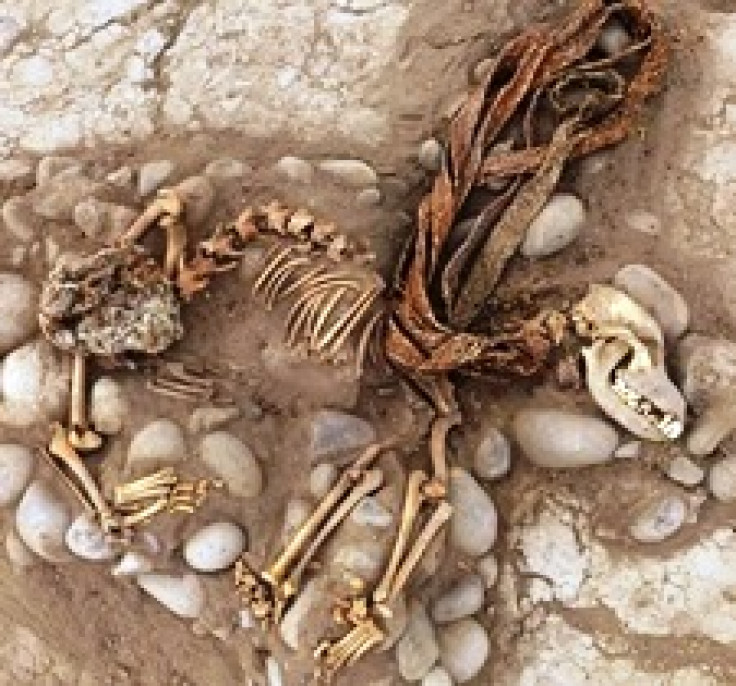Mysterious dog sacrifice dating back 1,000 years discovered in Peruvian temple
The dogs may have been strangled when their masters died – to serve as guides in the afterlife.
Alongside human bones, the remains of ten dogs and two guinea pigs were found buried in an ancient temple at Peru's Parque de las Leyendas Zoo, archaeologists have announced. The find (of dogs) is particularly interesting as the animals' legs were tied together and they had ropes around their necks, hinting at a sacrifice to the gods.
Archaeologists had already been excavating the zoo's international zone for a few years, focusing on a range of ancient monuments dating from the Pre-Columbian era which they had uncovered.
Between 2012 and 2013, they made a mysterious, significant discovery, digging up 134 human skeletons and animal remains belonging to 138 dogs. They identified the bones as remains from the time of the pre-Incan culture of Ychsma, dating back to between 900 and 1470CE.
While it was not uncommon for ancient Peruvian civilisations to bury dogs, the experts say that what happened at this site is different. Dogs were here specifically buried next to humans – not in animal-only cemeteries – and first analyses suggested that they had been strangled.
The archaeologists were puzzled about the purpose of this type of sacrifice, which might have taken place where the Parque de las Leyendas now stands.
The latest discovery of the ten dogs and the two guinea pigs, at the heart of two small trenches in the pre-Incan Huaca El Rosal temple in the zoo, may constitute another piece of this puzzle. It may help archaeologists to better understand the ritualistic practices of the Ychsma culture and their use of dogs and other animals in sacrifice. These newly excavated remains are thought to be about one thousand years old.
Guides in the afterlife

Both male and female dogs were identified. Each of them had a leash around its neck and their legs had been tied. Most dogs had a height of about 42cm, weighted around 12 kg and had a brown fur.
"The dogs were positioned as though they were sleeping directly on the stones. On this filling, they are tied by the front and rear legs and neck. Many of them had the rope tied around their neck. That is how they were found, as if they were sleeping, so we think that is part of a sacrifice," Lucenida Carrion, head of archaeology at Middendorf Museum at the Parque de las Leyendas, said during a press conference on 12 September 2016.
So far, the dominant hypothesis is that the Ychsma culture sacrificed the dogs as an offering to the gods, so that they would serve as guides for their owners in their afterlife.
The other explanation is that the dogs were crucial components of sacrifices that took place following a conflict or a traumatic event. Indeed, some of the human remains found in previous years displayed traces of great violence, so it is possible that the dogs were offered to the gods after the occurrence of mass human death.
© Copyright IBTimes 2024. All rights reserved.









